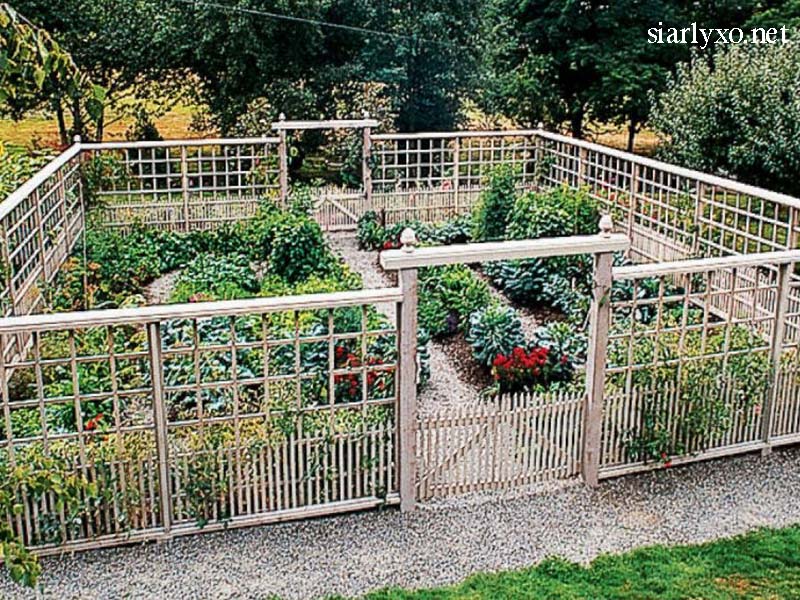Keeping deer out of your garden can be a challenging task, especially if you live in an area where these graceful creatures are common. As beautiful as they are, deer can cause significant damage to your plants, flowers, and vegetables. Fortunately, there are several effective strategies to deter these animals and protect your garden. In this article, we will explore various methods, from physical barriers to natural repellents, ensuring that your garden remains a sanctuary for your plants.
Understanding Deer Out of Garden
Before diving into the strategies to keep deer out of your garden, it’s essential to understand their behavior. Deer are browsers, which means they prefer to eat a wide variety of plants. They are particularly drawn to tender shoots, flowers, and fruits. Knowing what attracts deer to your garden will help you implement effective deterrents. Deer are most active during dawn and dusk, so any protective measures should consider these peak feeding times.
Physical Barriers
One of the most effective ways to keep deer out of your garden is by using physical barriers. Here are some options:
1. Fencing
Installing a Deer-Proof Fence: A tall fence is one of the most reliable methods for keeping deer out of your garden. To be effective, the fence should be at least 8 feet high, as deer can jump high.
- Material Choices: Use materials such as wire mesh, stock fencing, or electric fencing. Each option has its benefits and can be customized to fit your garden’s aesthetic.
- Design Considerations: Consider slanting the fence outward at the top, as this can deter deer from attempting to jump over it.
2. Netting
Using Garden Netting: If a full fence is not feasible, consider using netting to cover specific plants. This method allows sunlight and rain to reach your plants while preventing deer from accessing them.
- Lightweight and Invisible: Choose lightweight netting that is easy to install and remove as needed.
Natural Repellents
If physical barriers aren’t sufficient, natural repellents can be effective in keeping deer out of your garden.
1. Scent-Based Repellents
Utilizing Strong Odors: Deer have a keen sense of smell, and certain scents can deter them from approaching your garden.
- Cayenne Pepper and Garlic: Mix cayenne pepper with water and spray it on your plants. The strong smell and taste can repel deer. Similarly, garlic can be used as a spray or planted around your garden to create an odor barrier.
- Predator Urine: Commercially available predator urine (like coyote or fox urine) can signal danger to deer, causing them to avoid the area.
2. Taste Aversion
Making Plants Less Palatable: Some plants can be coated with substances that make them taste unpleasant to deer.
- Soap and Water Mixture: A mixture of soap and water can deter deer when sprayed on plants. The soap leaves a taste that deer find unappealing.
- Commercial Deer Repellents: Many commercial products are designed to be sprayed directly onto plants to make them taste bad to deer.
Plant Selection
Choosing the right plants is another essential strategy for keeping deer out of your garden. While no plant is entirely deer-proof, some are less appealing to these animals.
1. Deer-Resistant Plants
Incorporating Deer-Resistant Species: Consider planting deer-resistant varieties. Some options include:
- Lavender: The strong scent of lavender is off-putting to deer and can add beauty to your garden.
- Marigolds: These bright flowers are not only beautiful but also tend to repel deer due to their strong smell.
- Herbs: Many herbs like rosemary, thyme, and mint are unappealing to deer and can thrive in a garden setting.
2. Companion Planting
Strategically Combining Plants: Use companion planting techniques to create an environment that deer find less inviting.
- Mixing Plants: Plant deer-resistant species alongside more vulnerable plants. This strategy can confuse deer and reduce the chances of them targeting your favorite flowers and vegetables.
Deterrent Methods
Aside from barriers and repellents, several additional methods can help keep deer at bay.
1. Motion-Activated Sprinklers
Using Technology for Deterrence: Motion-activated sprinklers are an effective way to startle deer and keep them out of your garden.
- Surprise Factor: When a deer approaches, the sprinkler activates, spraying water and creating noise, which can scare them away.
2. Sound Deterrents
Implementing Noise-Making Devices: Sounds that are unusual or startling to deer can help deter them.
- Wind Chimes and Bells: Hanging wind chimes or bells around your garden can create sounds that might scare deer away.
- Ultrasonic Devices: Some devices emit high-frequency sounds that are inaudible to humans but can be disruptive to deer, encouraging them to stay away.
Maintaining a Deer-Resistant Garden
Keeping deer out of your garden is an ongoing process. Here are some tips to maintain your deer-resistant garden effectively:
1. Regularly Update Your Strategy
Adapting to Deer Behavior: Deer can become accustomed to certain deterrents, so it’s essential to regularly change your strategies.
- Rotate Repellents: If using scent-based repellents, switch them up periodically to maintain their effectiveness.
- Adjust Planting: Introduce new deer-resistant plants to keep deer guessing and deter them from returning.
2. Monitor and Assess
Keeping an Eye on Deer Activity: Regularly check for signs of deer activity in your garden, such as tracks or nibbled plants.
- Take Action Promptly: If you notice increased deer activity, implement additional measures or modify your existing strategies.
Community Collaboration
Sometimes, collaborating with your neighbors can enhance your efforts to keep deer out of your garden.
1. Neighborhood Watch
Forming a Community Network: Work with neighbors to share strategies and solutions for deterring deer. A united front can amplify the effectiveness of your efforts.
- Coordinate Planting: Consider planting deer-resistant plants in common areas or discussing fence installation to create a barrier across multiple properties.
Conclusion
Keeping deer out of your garden requires a combination of strategies and ongoing effort. By understanding deer behavior, implementing physical barriers, using natural repellents, choosing deer-resistant plants, and employing deterrent methods, you can significantly reduce the risk of deer damaging your garden. Regular maintenance and community collaboration can further enhance your success in creating a deer-free sanctuary for your plants. With patience and diligence, you can enjoy a thriving garden without the threat of deer intrusion.
By employing these effective methods, you can ensure that your garden remains a beautiful and bountiful space, free from the challenges posed by deer.




